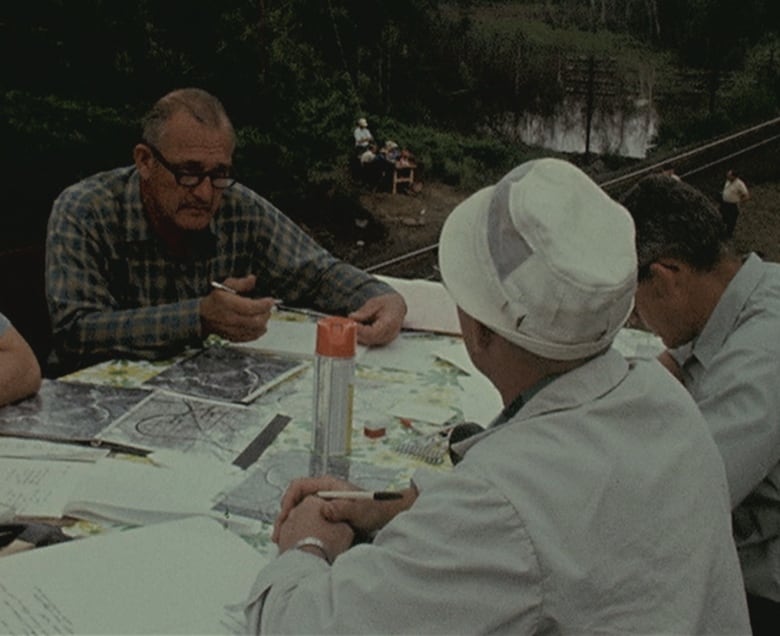Sudbury, once known as a moonscape, was the training site for crew members from two different NASA moon missions.
The northern Ontario city has worked hard to shed that moonscape image with extensive regreening efforts over multiple decades, but the Apollo connection remains.
In fact, a significant milestone is being marked this week: 50 years since the first training visit in 1971 by American astronauts who were part of the Apollo 16 mission (in April 1972). Astronauts also trained in Sudbury a year later, for Apollo 17, for the final moon landing in December 1972.
Michael Dence was one of the experts who guided crew on their training missions. Based in Ottawa, he has been a planetary scientist for 60 years, and is an internationally renowned expert on meteoric collisions, like the type that created the Sudbury basin.
Dence spent three days in Sudbury each year the astronauts visited to study impact structures (crater-like geologic structures of bedrock or sediment) and shatter cones (rare geological features known to form in bedrock beneath craters).
“The people at NASA in Houston decided that they should make Sudbury the routine for part of their training program,” he said.

Apollo 16 crew members John Young and Charles Duke, and Apollo 17 crew members Harrison (Jack) Schmitt and Gene Cernan came to Sudbury in the respective years.
“We had about three days showing them around,” Dence said.
Astronauts got mock equipment
For the Apollo 16 training session, Dence said, NASA decided to make Sudbury a mock traverse on the moon for the July 7-9 training.
“They rigged up the astronauts, Young and Duke, with mock equipment. Some of it worked, particularly their cameras, but the rest was just backpacks and so on, which made it looked like they were traversing the moon.”
Dence said the training setup included microphones for the astronauts to describe what they were observing on the backside of a hill.
“We watched them and helped guide them, and to some extent instructed them in what to look for.”

The experience was different for the Apollo 17 training in the northern city because Schmitt was a trained geologist.
“We had a much more conventional geological type tour,” Dence said. “[The training] was done basically with talking to Schmitt and making use of his personal expertise in the process.”
Was Sudbury training helpful?
‘While we have this appellation of Sudbury being lunar-scape-type terrain, it really was rather a different experience when they got there,” said Dence.
“What we were doing in Sudbury was looking for places where the rock, the solid rock was showing, and we could look at the structures in the rock,” he said.
“When it came to the moon, no rock faces are visible anywhere because it’s all covered with what they call the soil, and fine dust and larger chunks which have been chucked around on the surface due to the bombardment that the moon has suffered for the last three billion years.
“Nowhere did they see bedrock on the moon.”
However, Dence said, with the samples the astronauts brought back from the moon, scientists were able to find distinctive signs for sharp effects also found in terrestrial craters, including Sudbury.
The astronauts were in Sudbury about eight months before their respective Apollo takeoffs.
Dence said there was a heavy schedule during the training, with a focus on what the astronauts were doing, and yet the excursions seemed relaxing for the crew.
“They were great fun,” Dence said of working with the astronauts. “I think they were enjoying themselves and kidding around.
“They were dead serious in one respect, clearly on a mission,” he added.
Apollo legacy in northern Ontario
Apollo 17 was the last lunar landing mission for NASA, and its crew was the last to walk on the moon.
“They were the sort of wrap-up crews,” Dence said of the legacy it leaves.
“As far as Sudbury is concerned, this was just one of many excursions that have been held since, as we came to grips with the finer points of why Sudbury was an impact structure and what had happened to it,” he said.
“Much has happened at Sudbury, so it’s been a very complicated story to sort out, but nonetheless, it’s held its own as an impact structure, and we’ve learned a lot from it.”

‘Moonscape’ regreened over
As for the regreening across the Sudbury region since the astronauts were here, Dence is glad to see that improvement.
“I’ve been pleased to see Sudbury become much more, shall we say, cosmopolitan and diverse with several big science projects involved,” he said, referring to the underground Sudbury Neutrino Observatory (SNOLab), and its science, geological and mining projects.
“I think the covering of the areas where we went with the astronauts with new vegetation is one of the changes which is a plus, of course, from a visual point of view, but a bit of a minus if you wanted to see exactly what the astronauts looked at.”
According to Dence, there talk of retracing the steps the Apollo 16 and Apollo 17 astronauts took during their training in Sudbury.





More Stories
Satellite built by N.B. students not responding a week after entering Earth’s orbit | Globalnews.ca
Cisco reveals security breach, warns of state-sponsored spy campaign
Ingenuity Mars Helicopter down but definitely not out | CBC Radio